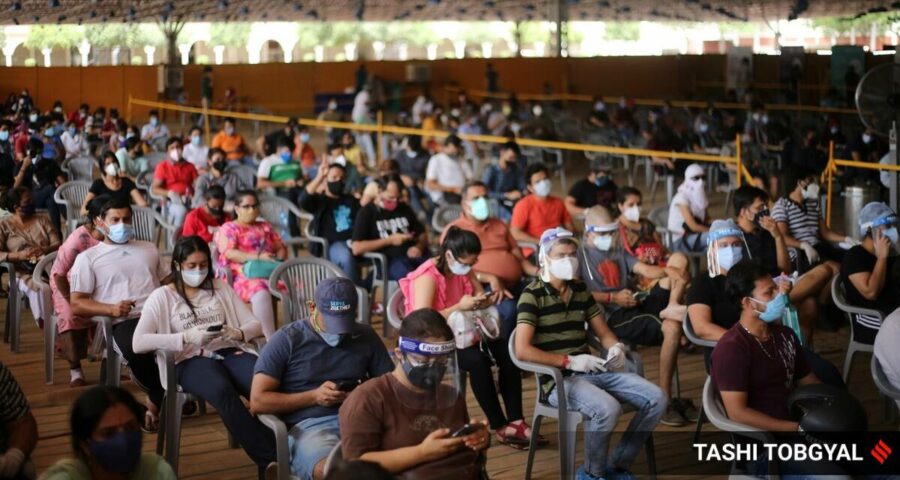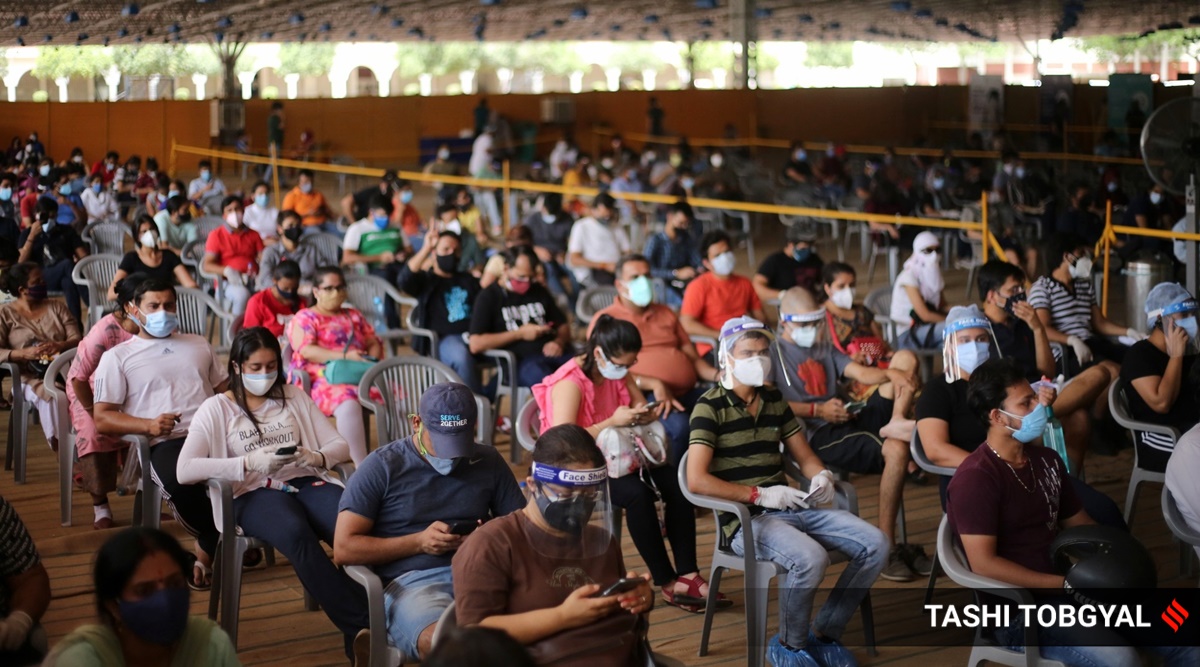The approach helps zero in on super-spreader events and hotspots.
Written by Amir Ullah Khan
India is reeling under a massive second wave of the Covid-19 pandemic, though there has been a marginal let up in the last seven days. There are reports of contact-tracing efforts being severely hampered across the country, with many states struggling to dedicate resources towards it and concentrating on testing, treatment, and vaccination.
The choices of infection control are severely limited and, so, instead of giving up on contact tracing and tracking, it should be further strengthened with the optimal combination of manual and digital tools and by adopting new methods to check the spread of the disease. Priority should be to track incidents of high-risk exposure contacts based on the capacity available to states.
Testing and tracing are essential to flatten the curve; however, these have not been done uniformly across India. In the initial stages of the pandemic, most states saw success with contact tracing. However, as cases surged, the system was soon overwhelmed, and in the second wave, states have been pushed into a corner and have abandoned tracing. As the pandemic spreads deeper into rural and peri-urban areas, it is necessary to revisit the strategies for the most optimal outcomes.
Our analysis in an upcoming study, “Technology-Aided Models for Tracing and Tracking Covid-19” suggests combining digital tools such as a revamped Aarogya Setu with manual efforts to track, trace, isolate, and quarantine virus carriers in a timely manner. A majority of the Indian population continues to lack digital access and as such, it is crucial that digital tracking methods be supplemented with manual contact tracing. In rural areas, engaging and training Accredited Social Health Activists (ASHA) workers is essential to build trust and screen the local population in a timely manner. Widespread contact tracing and tracking is crucial to understanding how the disease is spreading and will help in designing effective vaccination plans and disease control strategies.
The experiences of countries such as Japan, Singapore, Taiwan show that contact-tracing efforts are most effective when there is localised surveillance, quarantine, and isolation of active cases, and the use of methods such as cluster-busting — rather than tracking down the contacts of an infected person and isolating them, this method involves finding out where the individual caught the virus in the first place. Such retracing is based on an understanding that infections occur in clusters, often at super-spreading events. Studies have shown that a minority of infections cause most Covid-19 transmissions in Super-Spreading Events (SSE). The Rockefeller Foundation Report, “The Road Ahead for Smart Covid-19 Testing and Tracing in India” draws from such an analysis and recommends integrating retrospective tracing into the existing contact-tracing programmes for cluster-busting. Cluster-busting not only tackles Covid-19 retrospectively but also prospectively — it gives specialists the opportunity to not only look back at SSEs but also anticipate how and where clusters may form and take action to prevent them.
As vaccination has started across the country, it is time to move forward with a combined cluster-busting and vaccination push so as to suppress flare-ups and target hotspots efficiently. This will help in targeting SSEs such as weddings, conferences, meetings which have been shown to be hotspots for the spread of the disease.
As experts had predicted, the current wave seems to be peaking but it will be more than a month before the curve is flattened. This is an opportune time for governments across the country to mobilise contact-tracing efforts, with a mix of digital and manual tools. The health system should also be prepared for the possibility of a third wave expected in October.
The success of a tracing programme is dependent on the willing participation of the public, and no contact-tracing programme can succeed without the active support and involvement of the community. India has followed a top-down approach and public health communication has been lacking. Hence it is imperative that the government engage in removing the stigma around Covid-19 through effective communication and involve members from the community in tackling the pandemic. This will ensure better preparedness for the next wave of Covid-19 and future infectious disease outbreaks.
(The writer is Research Director at the Centre for Development Policy and Practice)
Source: Read Full Article


